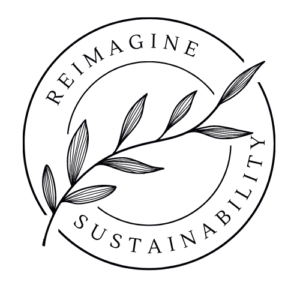Life’s a lot easier when you only have one thing to focus on, right? Multitasking is no longer what it used to be. Different studies prove that multitasking impacts our health negatively, and to be honest, we’re usually not even too proud of our half-heartedly done work anyway.
Contrary to popular belief, multitasking lowers your performance and you’re less efficient than you think. Is single-tasking the way to go? Apparently, single-tasking allows you to get more done and it increases your performance. The truth must lie somewhere in between and usually the right dose of different approaches is the key to success.
We are all very different so a one size fits all narrative won’t work. Finding what works for us and contributes to fighting our battles and addressing our needs and well-being is usually a good indicator that we’re doing fine. This is something everyone needs to figure out for themselves, and seeking information and inspiration puts us on the right path.
Sure, it would be a lot easier if we got everything we need to know served on a silver platter, but the reality is that we have to pick what’s best for our circumstances. In the end, we are individual human beings who just want the best for ourselves and others.
Our world is very complex, but there are ways to make it easier to understand
We live in very complex systems which are not very easy to understand, especially when it comes to Sustainability. We are flooded with information that we’re just not doing it right, which is fair, but counterproductive. Thus it is a lot easier to navigate the point of focus onto a single issue. Here lies the problem, because to tackle a Sustainability challenge we cannot ignore the other parts of the problem.
Applying a single focus to one issue whose effects are heavily negative on a global scale is not going to help. The single-focused solutions won’t bring the results we need if we don’t take all causal parameters into account. What I’m getting at, is that the focus on sole Climate Change issues and Net-Zero solutions won’t bring about the change we want to see. Climate Change is only one part of the puzzle.
Visual frameworks are ideal to easily show how issues are connected
To visualise this problem, Jan Konietzko created the Carbon Tunnel Vision graphic. It highlights the trouble with solely focusing on carbon reduction and removal while neglecting the other global crises. By applying only-carbon solutions we are more likely to fail in addressing the real issues. On top of that, we are missing out on real opportunities to achieve the system change which we need to conquer the effects of the upcoming crisis.

Inspired by Jan Konietzko’s Carbon Tunnel Vision
Alright, enough of this doomsday talk! Unfortunately, this happens when writing about Sustainability as I have to create a basis for inspiration by elaborating the problems and causes first. But let’s flip now to the solution side of the coin and find out how we can use the Carbon Tunnel Vision to bring us one step closer towards Sustainability.
What is a carbon tunnel vision?
A Carbon Tunnel Vision refers to changing our ambitions from a sole carbon focus to a wider all-encompassing vision, tackling all current and future crises. As my adapted and modified graphic of the carbon tunnel vision shows, all the different crises relate to each other (there should be more red connecting lines but then we wouldn’t see our beautiful planet anymore).
This graphic clarifies how we have to acknowledge the interwoven nature of the challenges and find various, holistic ways of solving them. The Carbon Tunnel Vision is a great starting point in becoming aware of the number of interconnections and challenges we are facing.
Globally, we are setting ourselves up with Net-Zero targets, but we need to go beyond that. We can’t simply focus on one crisis and ignore the others, because tackling multiple crises at a time will bring us closer to sustainability success. We need to discover the specific crises in a country, region, city or town and identify how they relate to each other.
The next step would be to develop a solution to solve the problems at their roots instead of only addressing the outcomes. Taking a holistic approach to tackling society’s challenges is crucial, and the Carbon Tunnel Vision framework supports us to develop our systems thinking ability. Furthermore, we need to quickly get past the carbon-only approach to minimise the negative outcomes on environment, society and economy on a global scale.
Why do we need to see things more holistically?
To be honest, I don’t see humanity reaching their net-zero goals anymore. Boom! I know this is not really an inspiring statement, but consider that we crossed many of the planetary boundaries (<– link to my article) a long time ago. However, we are not necessarily doomed. We are already experiencing the effects of intensive greenhouse gas emissions production: more extreme weather patterns resulting in floods, droughts etc.
No one is really mentioning it, but mitigation will become our new best friend, as it isn’t one way to straighten things out again. Instead of wasting time and resources in continuing to fight against global warming, we should direct our attention to come up with ideas of how to live with the consequences. Just some food for thought from my side.
Finding inspiration in other’s work and developing it brings us closer to sustainable solutions
Alright, let’s move on to another graphic. This time Bridget McKenzie was inspired by the Carbon Tunnel Vision, but she added a holistic twist. Her tool is called Earth Crisis Blinkers, which outlines Earth’s crisis in regards to causes, impacts and solutions. The outer circle refers to the impacts on lives, the middle circle is the nine planetary boundaries, and the inner circle represents the sustainable solution space.

Inspired by Bridget McKenzie’s Earth Crisis Blinkers
Developing simple but thoughtful frameworks is an ideal way to reflect the reality in which we live. As much as most of the crises are prevalent in many countries, the focus of every individual or work group will likely lie in different areas. Understanding the relationships between causes, impacts and solutions is a lifesaving approach for the human species.
In connection with Sustainability issues, we speak of Earth Crises. But I have to disagree with the term Earth Crisis, because in contrast to all living beings, Earth will continue being the Earth with or without them. Those are humanity crises. We don’t have the power (at least I hope so) to destroy Earth entirely, but we have the power to destroy our livelihood and the livelihood of billions of other species.
So what do we need to do? Firstly, understand the interconnectedness of our Earth systems. Secondly, find opportunities to reverse the damage we have caused. Pretty simple, don’t you think?
What are the opportunities we can reach beyond the carbon tunnel vision?
It can be quite overwhelming to decide where to start and what to do. For a while, I felt like there was simply too much to do and I experienced decision paralysis paired with deep anxiety about the state of our world. At one point, I realised that there are a lot of like-minded people who also want to contribute to overall Sustainability. This thought took away the pressure from my shoulders so that I can do what I do best: inspire people to do something slightly different and see the magic happen.
We cannot solve all the problems ourselves, but we don’t have to in the first place. Eight billion people are a big resource pool and every single one of them can find their place in contributing to sustainable development.
We are all in this together
Collaboration is now more than ever crucial to finding suitable sustainability enablers. With our different skill sets, our different approaches to tackling a problem, and our different experiences, ideas, visions and dreams, we’ve got what it takes to minimise the harm of the crises. So, inspired by the Carbon Tunnel Vision and Earth Crisis Blinkers, I developed a visual to show how a collaborative approach could look like.

Human Crisis Collaboration inspired by Dr Jan Konietzko’s Carbon Tunnel Vision and Bridget McKenzie’s Earth Crisis Blinkers
I like to use the slogan: We are all in this together! And as you can see from the graphic, the more people we have on board the more crises we can actually tackle. Looking at a problem from different angles gives us a wider picture, but it is absolutely fine to focus on one problem area. Additionally, you get the chance to collaborate with people who have knowledge and skills in a different field which might be beneficial to support you to solve your issue.
We can easily create the sustainable systems we need
Sustainability doesn’t have to be complicated, and overall sustainability is definitely not an impossible goal. But understanding our relationship with the Earth’s systems and our relationships with each other is a fundamental basis to achieve overall sustainability. When we use this holistic point of view, the solutions will come naturally to us. It will open our eyes to the opportunities and values which are ahead of us. That is … if we decide to choose this pathway.
The era of carbon-only approaches will hopefully end soon. We simply need to shift our focus and look at what others are already doing, what is working and what is not working. Multi-tasking will be required sometimes, but once we settle on one or more pathways, we will have everything we need to continue our journey. Exchange information and benchmark your journey to make our endeavours of reaching sustainability goals not only easier, but also more enjoyable. Every step can be inspirational for someone else, and then without noticing we’ve started a chain reaction of actions towards sustainability. It always feels good to do something positive and just imagine what we can achieve if this happens on a global scale. It will be magical!



Can we turn this into an experience? Like a game?
My first thought was yes! My second thought was we need people with different perspectives to bring it to life. What are your thoughts? What would you like to achieve by turning this model into a game?
Wow that was unusual. I just wrote an extremely long comment but after
I clicked submit my comment didn’t show up. Grrrr… well I’m
not writing all that over again. Anyway, just wanted to say superb blog!
I appreciate your effort of writing a long comment. It’s a pity that it got lost while uploading!